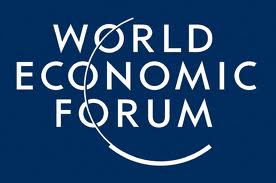- The World Economic Forum’s Shaping the Future of Real Estate initiative defines real estate asset ecosystems and how real estate bubbles could be limited through innovative solutions
- An early warning system prototype to flag markets that may experience dramatic downturns has been designed
- Download the full reports:
 Geneva, Switzerland, 5 April 2016 – Behavioural decision-making is key to understanding asset price dynamics, asset cycles and the macroeconomic interdependencies. The most destructive cycles are those in which asset price leverage and credits are intertwined, causing the greatest systemic effects. Asset-pricing dynamics impact economies from the local to the global level. Policy-makers, industry leaders and academics are currently debating whether asset-pricing dynamics can, or should, be managed in the public interest. An early warning system prototype, conceived by the World Economic Forum’s Asset Price Dynamics Steering and Advisory Committees, was able to correctly describe recent market developments. The Shaping the Future of Real Estate initiative delves into the mechanisms of asset pricing to learn how to detect when and why markets shift from fundamentals and how detrimental, irreversible consequences can be mitigated.
Geneva, Switzerland, 5 April 2016 – Behavioural decision-making is key to understanding asset price dynamics, asset cycles and the macroeconomic interdependencies. The most destructive cycles are those in which asset price leverage and credits are intertwined, causing the greatest systemic effects. Asset-pricing dynamics impact economies from the local to the global level. Policy-makers, industry leaders and academics are currently debating whether asset-pricing dynamics can, or should, be managed in the public interest. An early warning system prototype, conceived by the World Economic Forum’s Asset Price Dynamics Steering and Advisory Committees, was able to correctly describe recent market developments. The Shaping the Future of Real Estate initiative delves into the mechanisms of asset pricing to learn how to detect when and why markets shift from fundamentals and how detrimental, irreversible consequences can be mitigated.
Michael Buehler, Practice Lead Real Estate, World Economic Forum, said: “Within its first two years, the initiative developed a strong brand by engaging the key real estate ecosystem players: leading academic experts, central bankers and businesses from the real estate, investors and financial services industries. In this second project year, high-level multistakeholder discussions had been facilitated to further define asset ecosystems and describe how asset bubbles can be spotted early enough to be able to limit negative consequences. The focus was to help market players make more informed decisions. One workstream focused on designing a prototype early warning system to flag markets that will undergo severe downturns; a second work stream focused on institutionalizing the team’s insights and learning through developing an educational curriculum showcased through a case study.”
“Since real estate is inherently cyclical, analysing and predicting market cycles have always been critical topics for real estate investors, tenants and developers. The global financial crisis has increased interest among regulators and central bankers at both national and international levels. While we cannot expect to avoid future downturns, we do think that accurate, expert analysis could limit their financial and social costs,” said Colin Dyer, President and Chief Executive Officer, JLL, and champion of the initiative.
Barry M. Gosin, Chief Executive Officer, Newmark Grubb Knight Frank (NGKF), and champion of the initiative, adds: “With first-hand appreciation for the devastating economic, social and political effects that result when a market crashes, and with an intimate understanding of the long-lasting effects of commercial real estate crashes, this initiative sought to understand if there was a way to institutionalize the methodology associated with predicting dramatic commercial real estate market downturns. In collaboration with the World Economic Forum, the Asset Price Dynamics Steering and Advisory Committees developed an early warning system prototype that quantifies relative risk and signals dramatic market downturns. Used in conjunction with other methods and analysis, we believe such a system could increase overall market transparency and help prevent destabilizing effects of capital rushing into and out of property markets during periods of dramatic change.”
Prakash Loungani, Adviser, Research Department, International Monetary Fund (IMF), said: “This initiative is thus welcome for the information it provides on the real estate ecosystem – the main players and their motives. But they are far more ambitious in providing an early warning system for commercial real estate crashes. Moreover, the intent is to build a system that can be scaled up to the global level – it is currently applied to 10 US cities – and also applied to other asset classes, including the residential real estate sector. So, does the effort succeed? Yes, in our view. The initiative shows that the risk of crashes in the commercial real estate prices in US cities can be linked to developments in a few macroeconomic indicators – inflation rates, bond yields, consumer confidence, employment –and to growth in the sector’s net operating income. There is thus no complex or secret ingredient needed to assess the risks of crashes: one only has to look out of the windscreen.”
The World Economic Forum, committed to improving the state of the world, is the International Organization for Public-Private Cooperation.
The Forum engages the foremost political, business and other leaders of society to shape global, regional and industry agendas. (www.weforum.org).
